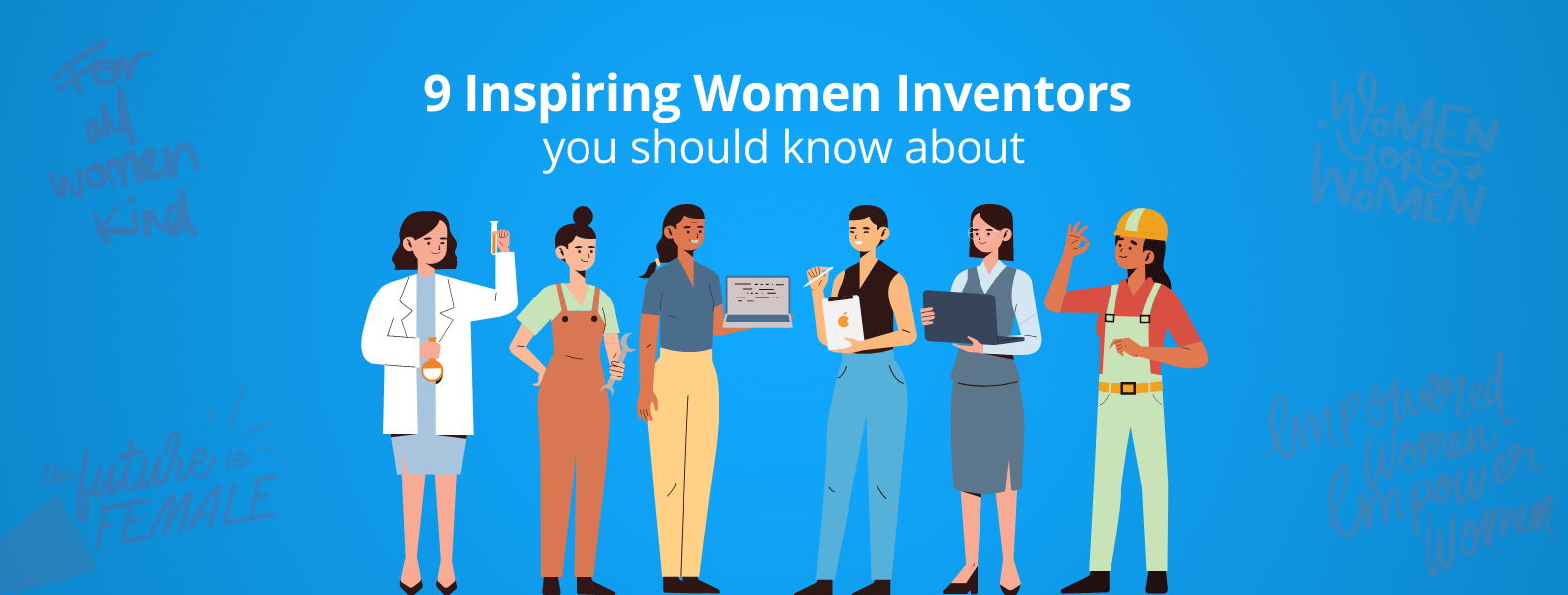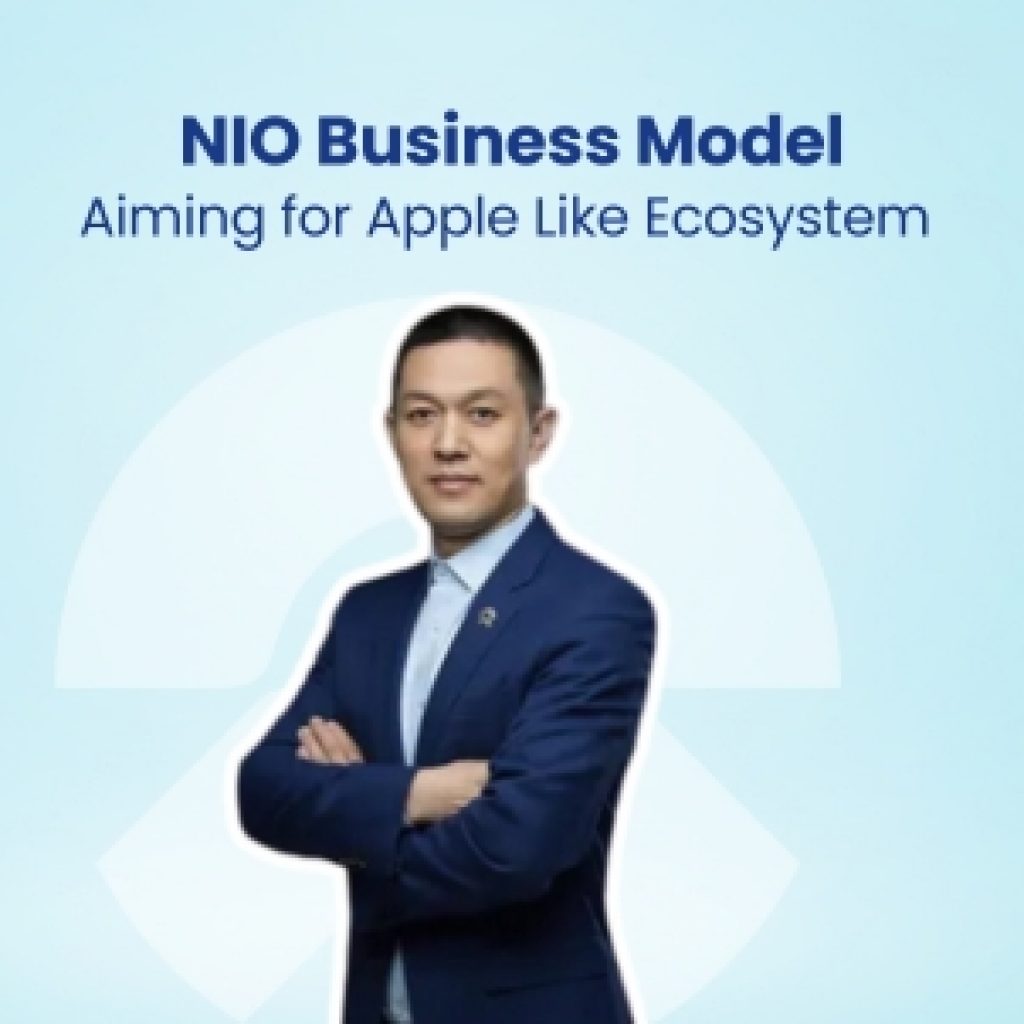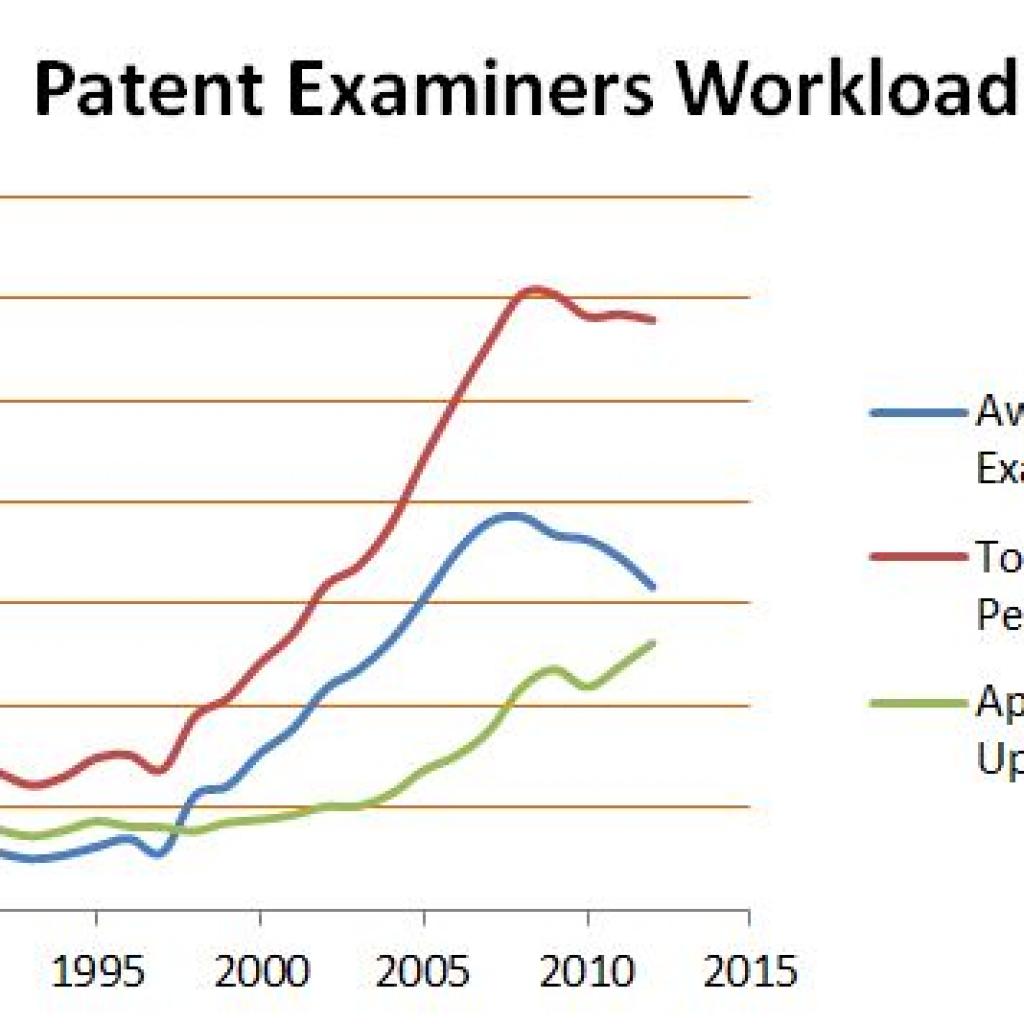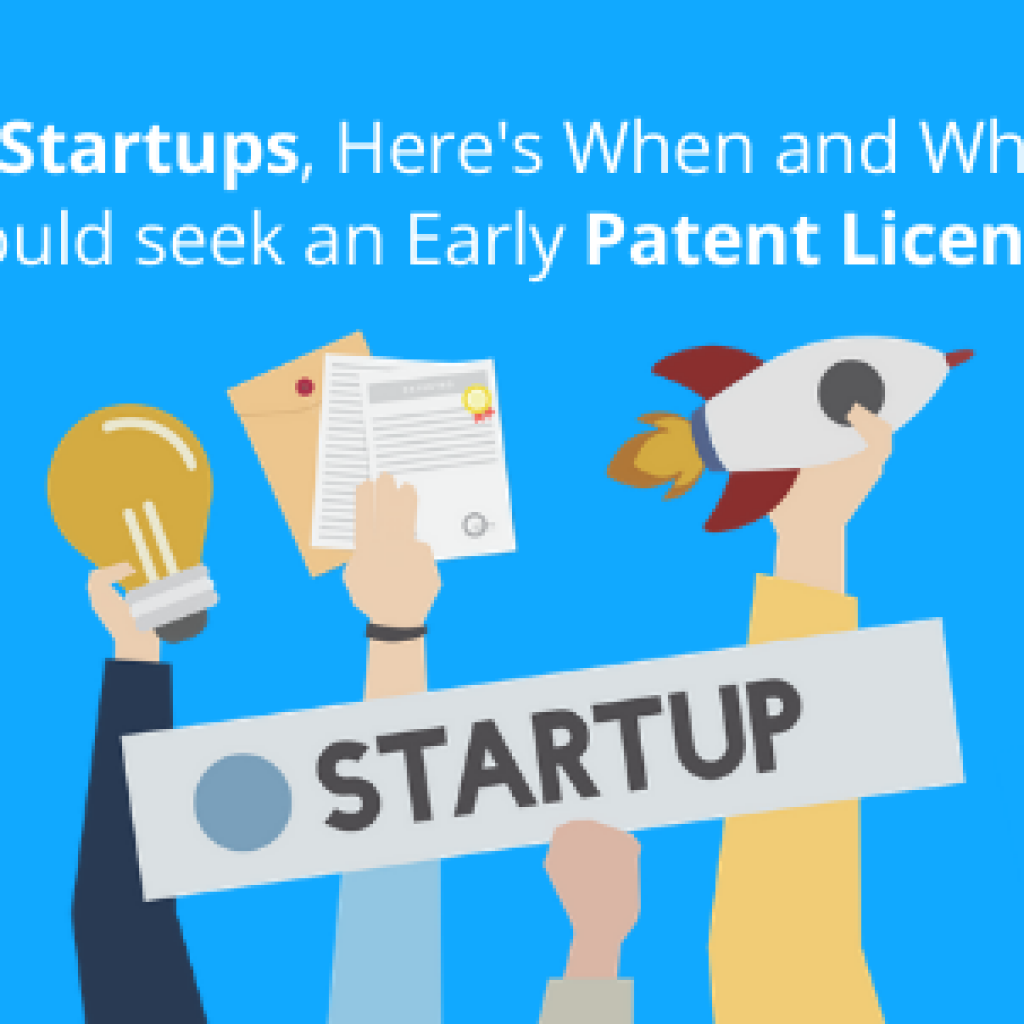If you are reading this on a smartphone, at some point down this list, you would be reading about a female inventor who developed an important component that powers your smartphones. Her company has shipped approximately 160 billion smartphone chips to date. Any guesses who she might be?
Well, before you go on a guessing spree, I want you all to take a moment and think about how women have become increasingly contributed to developments in technology. From Dr. Swati Mohan who was the operation lead and the voice behind the landing of perseverance rover to Ada Lovelace, the woman programmer who wrote the first computer program a century before the first computer was built.
There are countless numbers of women who have contributed in their won unique way to development of technology. While we cannot list them all, there are nine women inventors you should know about. Without any further ado, let’s have a look.
Agnes Poulbot
Dr. Agnes Poulbot is a Ph.D. in applied mathematics, and currently holds the position of senior expert in 3D design simulation programs at Michelin. She is a mother of five and loves solving puzzles. One such puzzle she untangled is related to truck tyre treads which earned her European inventor of the year award in 2018 given by the European Patent Office (EPO).
Dr. Agnes Poulbot invented a regenerative tyre tread technology in which a new tyre tread emerges when the current one in contact with the ground wears off. The technology is marketed as Reginion by Michelin and extends the lifespan of a tyre by 20% and reduces 3724 kg C02 emission per tyre.
She didn’t follow the traditional approach of using a single layer but designed a tyre with multiple shallow treads, stacked on top of each other. Next, she developed a special mold using 3D printing to make mass production possible. You can read Dr. Agnes’s patent on regenerative tyre tread by clicking here, and here is a quick overview of her patent portfolio.
Ann Lambrechts
Ann Lambrechts developed a revolutionary concrete that opened an entirely new world of possibilities for building professionals around the world by overcoming major technical, structural, and engineering challenges.
Her invention is marketed under the brand name Dramix by Bekaert where she works as a Global Sales and Product Manager. It has inspired architects to unleash their creativity and realize their visionary work. Some prime examples are the CCTV building in China and the entrance to Oceanogràfic aquarium in Valencia, Spain.
Ann Lambrechts invented Dramix by adding 55mm flattened hook-shaped ends steel fibers to wet concrete. It boosts the bending tensile strength of concrete by 32%, provides better crack control, and is easy in mixing and handling. Also, because the steel fibers are only 55mm in length, it reduced the cost compared to the older methods where rebar was added to the concrete.
Lambrechts brought a mini-boom into the building and construction world. From home apartments to tunnels, from corporate to public buildings, and from building and civil engineering work to flooring, her invention is being used everywhere. Her contributions to the building material world fetched her European Inventor Award 2011. You can find her patent on Dramix here, and a quick overview of her patent portfolio here.
Helen Lee
Now, this one has dedicated her whole life to research in diagnostics. Helen Lee has bestowed this world with wonderful inventions that help detect infectious diseases like Hepatitis-B, Covid-19, HIV to save millions of lives around the world.
She is the inventor of an instant blood diagnostic kit known as SAMBA (Simple Amplification Based Assay) that makes on-the-spot detection of infectious diseases like HIV, Hepatitis-B, and chlamydia possible.
The test kit is designed specifically for the African continent where 69% of the world’s HIV-positive peoples live. It can be stored up to 37°C for nine months and requires no trained personnel. SAMBA can detect the presence of the virus and viral load within minutes visible to the naked eye– without relying on costly microscopes. SAMBA runs on electricity but can function on batteries for eight hours.
As it detects viruses directly from blood and not antibodies, it is instrumental in detecting HIV in infants that have not yet developed antibodies. 91% of the world’s HIV-positive children live in Africa, making her invention more instrumental in saving the lives of infants.
Lee’s rapid diagnostic kit has an enormous impact on infectious disease management. By 2016, SAMBA diagnostic kit screened 40 000 people for HIV in Malawi and Uganda. During the Covid-19 Pandemic, the diagnostic kit SAMBA has been repurposed as SAMBA II for detecting the COVID-19 virus.
Lee won the European Inventor Award in 2016 under the Popular Prize category and received more than 36300 votes. Here is a quick overview of her patent portfolio.
Ursula Keller
Ursula Keller is a Swiss inventor and in her career filled with achievements and awards, she has made several breakthroughs in optoelectronics. Her works in ultrafast lasers have become a crucial standard for many industries, ranging from automotive to communication, medical surgery, as well as in laser science itself.
Keller finished her doctorate in Physics and Engineering in Applied Physics. Shortly after in 1989, she became a Member of Technical Staff (MTS) at AT&T Bell Laboratories, where she started her research on photonic switching and ultra-fast lasers.
Keller’s most known inventions include Attoclock – A device that can measure an unfathomably short amount of time down to a few attoseconds and Semiconductor saturable-absorber mirror (SESAM) which produces extremely short bursts of lasers, ranging in duration from picoseconds (10-12 seconds) to femtoseconds (10-15 seconds).
Cool trivia: 1 attosecond is one-billionth of one-billionth of one second or 1×10-18 seconds. One attosecond compares to one second approximately as one second to the age of the universe.
Such precision is a game-changer in the medical industry, particularly for laser eye surgeries and cutting cancerous tissues out safely.
After her tenure at AT&T in 1993, she joined ETH Zurich as appointed professor and has continued her research on precise scientific measuring equipment down to quantum levels and SESAM. And since 2010, she has been the Director of the Swiss National Research Centre for Ultra-fast Molecular Sciences and Technologies.
Patricia Billings
Patricia Billings, born in 1926 in Clinton, Missouri, is an aged artist at heart, and an inventor and businesswoman by profession. She started her career as a medical technician in 1946, and then later, embraced her love for sculpting and began studying art in 1956.
Billings ventured into sculpting and opened her own store in Kansas City. She poured her skills into creating and selling beautiful plaster of Paris sculptures over the years. In the late 1970s, Billings was working on a sculpture of a swan for a few months and accidentally broke it.
It was a precious piece and the accident sparked the motivation to find a stronger material that could take a beating. She tried different combinations but nothing seemed to work. Plaster of Paris mixed with cement was too brittle for sculptures.
Patricia was determined, after 8 years of researching, trying out different combinations; she found her answers in Botticelli’s famous frescoes, paintings that remained quite intact for hundreds of years in Italy. The answer was a secret catalyst (yes, still a secret).
“I am a Taurus, very stubborn.”
– Patricia Billings in her interview with Wall Street Journal
Her determination leads to the creation of Geobond, a fireproof, non-toxic building material. It has amazing heat resistance and is non-toxic in nature when compared to other products. Geobond carries the potential to become a multi-million product in the future. Coated on houses, this material could save hundreds of lives and property damages in case of fire-related accidents.
Patricia has filed 8 patents for her research on such materials. Click here to know more about them.
Marissa Mayer
She is Google’s first female engineer and 13th employee, and former CEO of Yahoo. She was listed on Forbes Magazine’s List of World’s 100 Most Powerful Women, not just once, but 3 times in a row – 2012, 2013, and 2014.
Marissa is a shy person and from quite early days of her inspiring career journey, she is known to have a strict and serious attitude towards work.
“She would do her work and then leave. When other people would stay and hang out and have pizza, she’d just be out of there because the work is done.”
– A Stanford classmate of Mayer
Mayer’s line of achievements and diverse work areas are just too many to be put in this short appreciation post. She is one of the top female inventors and businesswomen. Her list of career history is filled with leadership positions at leading companies like Google, Yahoo!, and Walmart.
She has filed 63 patents globally, covering technologies ranging from web crawling of search engines, indexing, and query processing to advertisements and monetization of news content. Here’s an overview of her patent portfolio.
Margarita Salas
Margarita Salas was a Spanish biochemist, researcher, and author in the field of Biochemistry and Molecular Genetics. She was the first scientific woman ever elected to the Royal Spanish Academy.
Salas achieved greater heights in her lifetime in the fields of Biochemistry and Molecular biology until her death in Nov 2019. Though she is no longer between us, her works will always be an inspiration for the generation of science, especially female scientists.
Born in Valdes, Spain on Nov 30, 1938, Salas’ father was a doctor and he became an inspiration for her to pursue science. She was a great fan of Rita Levi-Montalcini, a Noble Prize winner in Medicine. At the age of 16, she went to Madrid to appear in the entrance exams of Chemistry and Medicine.
After her undergraduate degree, Salas joined Alberto Sols’ laboratory where she completed her doctoral thesis on the anomeric specificity of glucose-6-phosphate isomerase.
After her Ph.D., she worked at New York University with Severo Ochoa. During her time in Ochoa’s lab, Salas started researching the bacteriophage virus Phi29. Her research revealed that although this bacteriophage has only 20 genes, it hides complex molecular machinery.
In 1970, she discovered a protein that is responsible for copying DNA – DNA polymerase that is capable of producing genetic copies precisely from tiny traces, like a drop of Blood. Based on minimal amounts of DNA, millions of copies can be made for use in genetic analysis, forensic medicine, archeological studies, etc.
Thanks to this discovery, geneticists, biologists, forensic investigators, or police experts who work with DNA samples can copy and expand it.
The invention got patented (with European registration number 90,908,867) in 1989 that was recognized by the Spanish National Research Council as the highest-grossing patent in Spain.
Salas’ recognition in Science and the contributions she made helped her gain the hereditary noble title of “Marquise de Canero” granted by Spain. In 2019, she was awarded the 2019 European Inventor Award. To know more about her awards and recognitions and her patented inventions, head over here.
“She said that the important thing was not to have wrinkles on the face but not to have wrinkles in the brain. And I jokingly say: when I grow up I want to be like Rita Levi-Montalcini.”
– Margarita Salas
Sophie Wilson
Sophie Wilson is one of the key figures who revolutionized microprocessor technology. She co-developed the ARM processor that might be living inside your smartphones, tablets, computers, WiFi devices, or even the ABS in your car.
The success of this processor could be attributed to the fact that according to Arm’s website they have shipped more than 160 billion ARM-based chips to date.
Though the story is four decades old, it still doesn’t fail to amaze the technology enthusiasts. Sophie was recruited to Acorn while she was still studying Computer Science at Cambridge University. While working at Acorn, Sophie along with Steve Furber designed and implemented a prototype of the BBC Microcomputer within a week’s time. Their effort helped Acorn to bag the contract for the Computer Literacy Project from BBC. Sophie also designed the operating system as well as wrote and executed BBC BASIC for a succession of processors.
The processor (First Arm Processor) they developed excelled in energy-efficiency as it needed fewer transistors than other designs – making it ideal for mobile devices. The current day processor is 10000 times smaller than the first one according to Sophie herself.
The processor was a smash hit, so much that a generation of British schoolchildren grew up with Microcomputers (BBC Microcomputers) she designed in their classroom.
Thereafter, Sophie along with 6 other partners founded a new start-up company Element 14 in 1999 based on a SIMD LIW processor known as FirePath. Their idea was to use FirePath in the ADSL wired broadband market.
Element 14 was later acquired by Broadcom in 2000. Currently, the Firepath processor is being sold by Broadcom for DSL and other applications. Sophie is presently working at Broadcom and has continuously been working on new ideas to make the microprocessor technology better.
Here is a lecture she gave on the future of microprocessors –
Sophie is a Fellow of the Royal Society, a Fellow of the Royal Academy of Engineering, a Fellow of the British Computer Society, a Fellow of the Women’s Engineering Society, an honorary Fellow of Selwyn College, Cambridge, and an honorary Fellow of the Institution of Engineering and Technology (IET). Ms. Wilson also has an honorary doctorate of science from Cambridge University and a CBE. She has 80 patents in her portfolio, you can read more about them here.
She is an honorary fellow of the Computer History Museum too and was a finalist in the 2013 European Inventor of the Year in the lifetime achievement category.
Macinley Butson
Macinley Butson, a young and talented inventor from Australia, became globally known for many of her life-saving inventions. Being extremely curious and eager to solve problems around her, she created her first invention at the age of 6.
Later in 2017, the 17-year-old Macinley became the first Australian to be placed 1st at the International Science and Engineering Fair in Translational Medicine. In the past few years, Macinley has created several life-saving products.
One of her most famous inventions ‘Smart armor’, shields non-treated breasts from exposure to unnecessary radiation when undergoing radiotherapy treatment. She has also come up with innovations like a device that simultaneously collects solar power and filters water for drinking.
Another remarkable invention that could save millions of lives in areas where safe drinking water is not easily available. The invention SODIS Sticker can accurately test if the water is safe for drinking or not. This invention led Macinley to win the Women’s Agenda Leadership Awards the prestigious Stockholm Junior Water Prize, becoming the first Australian to win such an award. More about it here.
“One thing that was different about me was my wish to aid humanity. I knew I could achieve this using my creativity and inventiveness. I just needed to have the focus and drive to work through my ideas to make them a reality. I now have 2 products which are ready for use in the medical field and the environmental engineering field.”
– Macinley Butson in her interview with Women’s Agenda
These women not just impacted all our lives but motivated so many young girls to choose a path that they always wanted to and to continue on it until they succeed and we’ll be forever grateful for that.
Women today are showcasing outstanding work in all the industries across the world. What we can learn from them is that they all led a normal life, pretty much like yours and mine but one thing that made them stand apart is their dedication to their work. Do you know any women inventor who you believe the world should definitely know about? We’d love to know their stories, the comment section is all yours.
Next Read: This International Women’s Day, let’s Celebrate the Women in IP










